If you want to channel your inner Gertrude Jekyll and go big on cottage garden ideas, the trick is to create an intimate space packed with color and scent, with dense planting spilling over pathways and framing windows and doors to create a serendipitous vibe.
1. Get Rid Of The Grass

Cottage gardens provide the backbone to both, delicious fruit or crops or scented herbs.
‘Typically the cottage garden surrounds a quaint home adorned in scented roses and climbers, is a confined space with no lawn, and intersected with paths,’ says garden expert Leigh Clapp. Pathways provide access and structure to the space while rich planting in the garden provides abundant interest and character.
2. Let You Planting Cover All The Soil
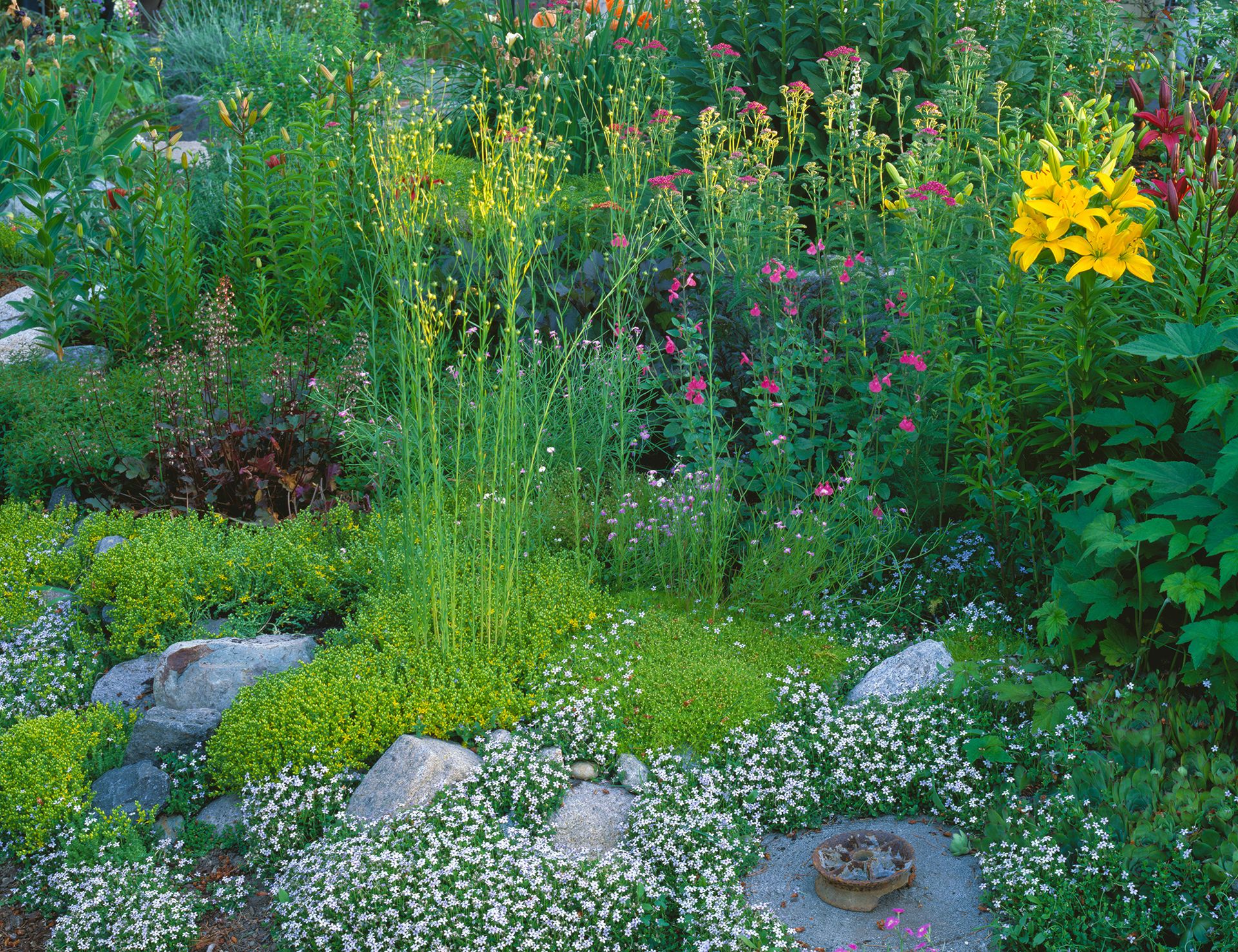
Exposed soil is a clear marker of a curated garden which stands in opposition to the freer cottage style. In order to avoid this, incorporate creeping and trailing ground cover plants into your scheme. Creeping thyme, wall germander and snow in summer are beautiful examples. Add rocks and boulders around which the plants can snake and climb to further the naturalistic edge and introduce a new texture. Don’t forget to also add height to your borders, the will ensure that there is balance to your scheme.
3. Frame Your Trees With Blooms
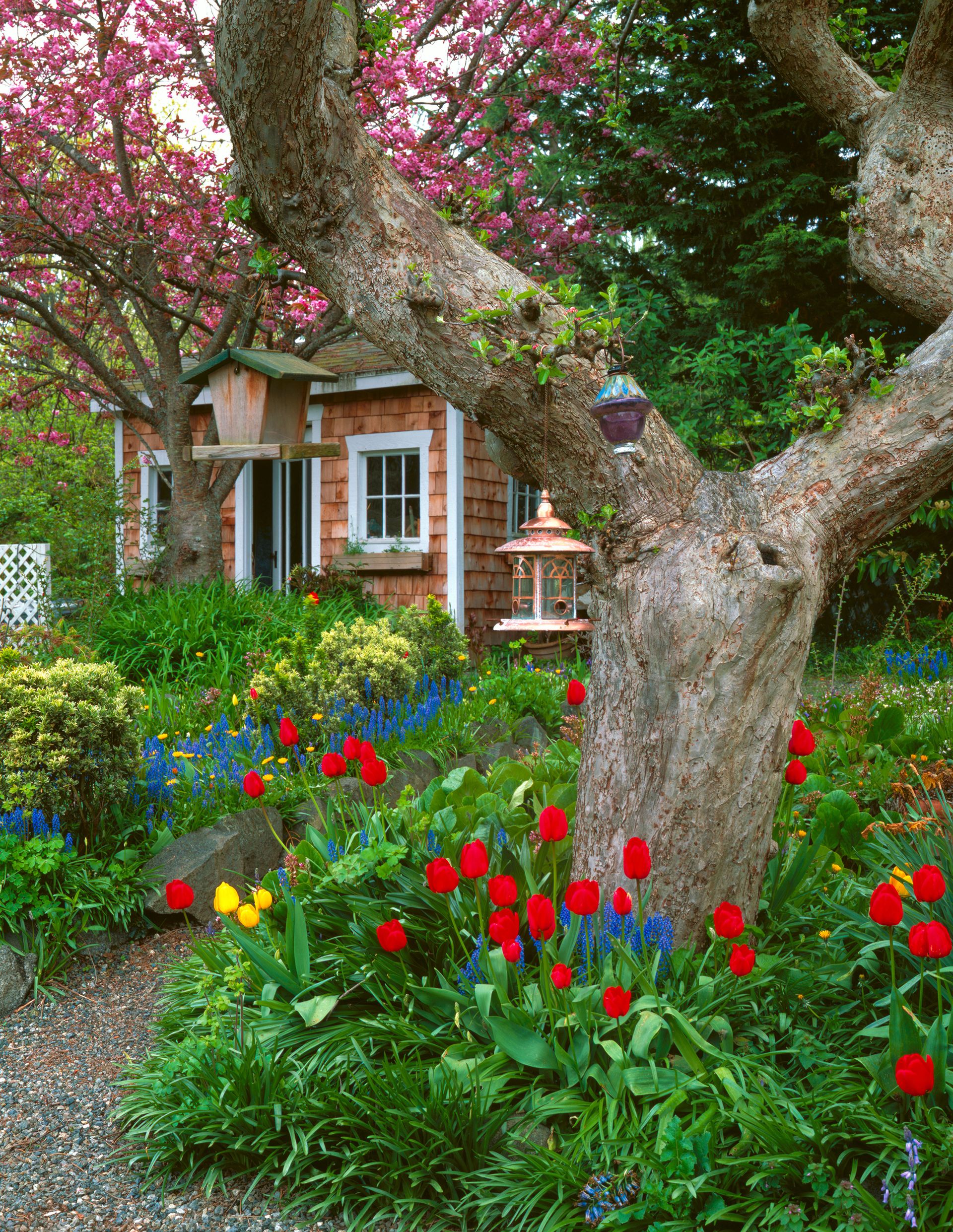
Underplanting your trees with seasonal blooms is a great way to add interest to an otherwise uninspiring part of your garden. There are many different approaches to but bulbs are one of the easiest options. Here, vibrant red tulips interspersed with naturalized grape hyacinths and dots of yellow tulips and daffodils make a painterly palette in this otherwise dead space.
The beauty of bulbs is that they are perfect for any size of garden, will divide and naturalise over time and also require minimal maintenance. Plant a mix of the and the to ensure a continuous display throughout the warmer months.
‘The cottage garden style can be adapted to any garden, whether rural or not, small or large. Best of all, it allows for great amounts of self-expression; there are very few rules other than a profusion of plants, a love of flowers and a distinct lack of grandiosity,’ adds Clare.
4. Add Screening To Your Cottage Garden
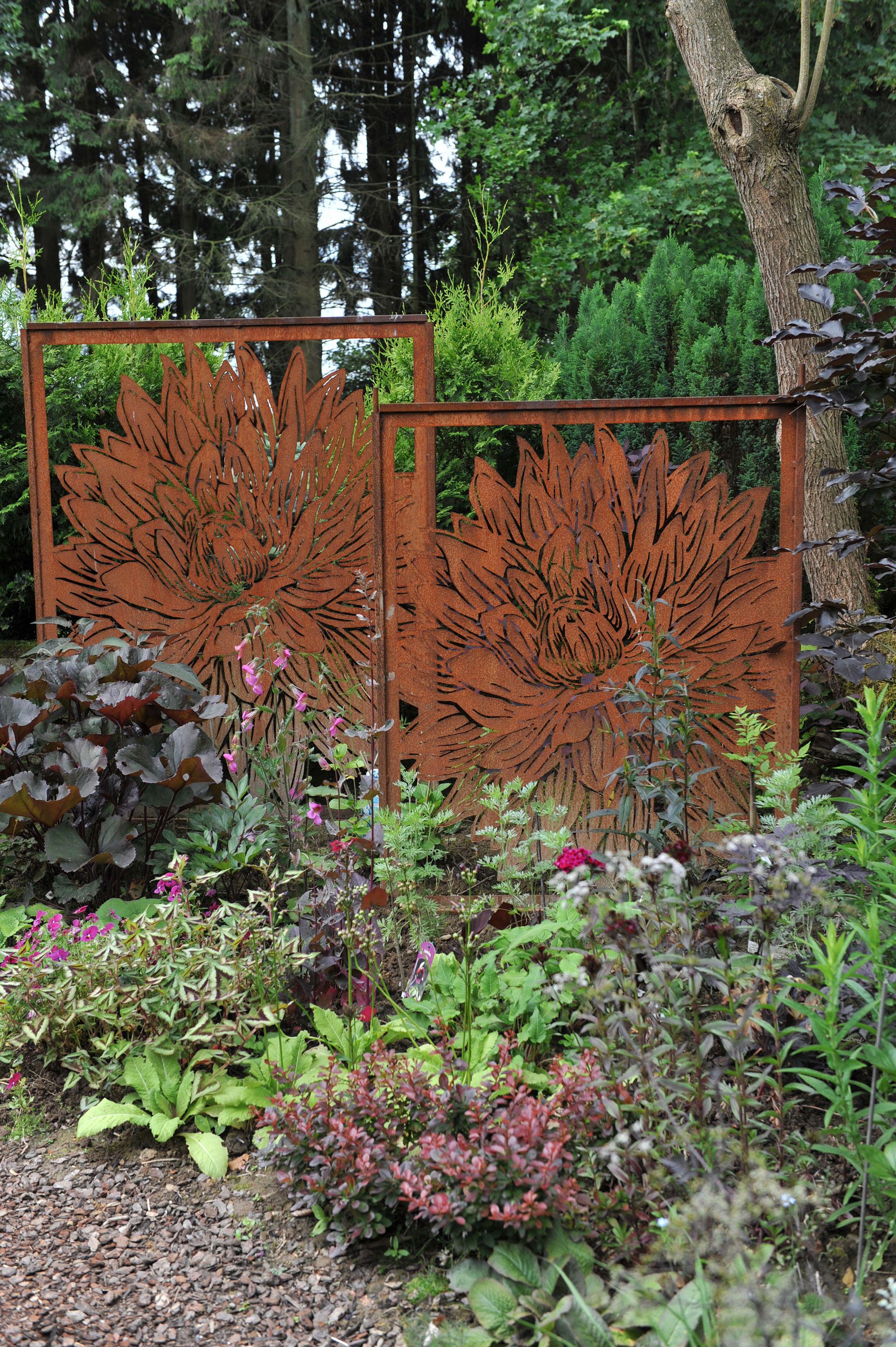
Of course, planting pretty blooms is the first part of learning however, hard landscaping is also very important in creating an aesthetically pleasing space.
In addition to providing valuable privacy, will help you to zone your garden and divide the planting into specific spaces. When looking for screens to use in your cottage garden ideas, opt for a natural material such as wood to help it blend in. Alternatively, opt for an artfully aged decorative metal design for a bold statement that will add interest all year round.
5. Make Your Own Cottage Garden Rules
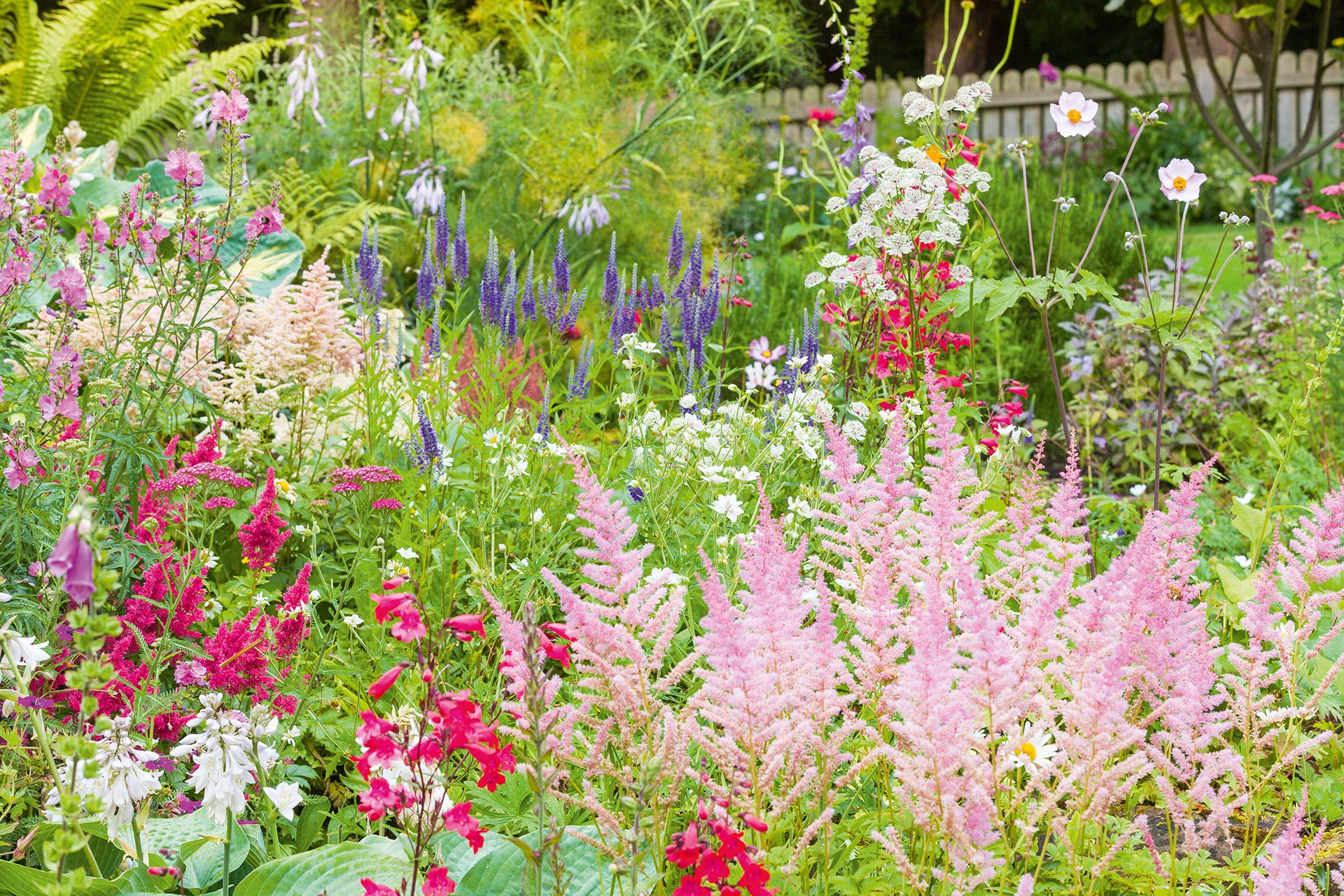
Rooted in the romance of quintessential cottage garden ideas are a firm favorite and can be found alongside a wide range of . No two cottage gardens are the same – your cottage garden ideas will be a reflection of your own tastes as well as drawing ideas from the exterior design of your home.
‘There is no typical cottage garden – and that’s one of the joys of cottage gardening,’ says Margaret Hensel, author of . ‘Cottage gardens are individual, personal expressions. I have visited hundreds of gardens in both the UK and the US, and that is one of the points. They are the children of a gardener’s imagination and the many different sites, houses and cottages.’
Today, cottage gardening is more of an ethos than a set of rules to be followed. It’s about embracing nature’s beauty and intricacies, rather than forcing it to conform. Rambling, rather than rigid. Imperfectly charming, rather than perfectly chic.
While certain established cottage garden ideas will help you to get the overall look and feel, you should embrace the freedom to create a scheme that is truly unique to you and your home.
6. Pick The Right Flowers

According to garden designer MSGD, historically, as well as being pretty to look at, the plants in a cottage garden earned their place by being easy to grow, useful, edible or a mixture of all three. When deciding on your planting schemes, take inspiration from as well as ideas to help you combine the best mix of blooms and crops.
It’s the versatility of the cottage garden style which appeals too. Tracy suggests that ‘the resulting symphony of shape, texture, colour and scent in a seemingly unstructured layout can bring bucolic charm to any plot, even in the heart of a city.’
For a truly authentic cottage look there will be a variety of different shapes and forms in the border. Landscape and garden designer MSGD recommends using history as a guide, ‘where possible look at modern cultivar equivalents of the plants which would have originally grown in a Victorian cottage garden. Roses are the obvious choice but they must be scented.’
Tracy Foster adds height with hollyhocks, delphiniums and foxgloves. For other flower shapes try the flat panicles of achillea, ball shaped inflorescences of globe thistle (Echinops ritro) or cheerful daisy flowers of leucanthemum or rudbeckia.
7. Install Raised Beds To Create A Sense Of Order Amongst Chaos

As has already been said, the beauty of cottage garden ideas is that there are no rules. Therefore, you don’t necessarily have to embrace the floral free-for-all of traditional cottage style. There are plenty of that will help to bring order to your space, while still letting you indulge in the vibrant and chaotic planting of your cottage garden ideas. Confining plants to the boxes not only makes your garden easier to navigate and tend, but also makes it easier to combine plants and crops together in one place – as you would when
8. Add Vertical Interest With Climbing Plants

If you’re looking for cottage garden ideas that will create the most impact, then start with theThere are so many varieties that can be grown upwards, and so many benefits to adding them – from covering an unsightly wall to filling the air with fragrance.
‘For millennia we have used climbing plants to green a surface or espaliered fruit against a warm wall. Arbours, arches, tunnels, trellises and pergolas can become lovely focal points adorned in profusely flowering roses entwined with clematis for example,’ says gardening expert and writer Leigh Clapp.
Roses are a classic option – consider a rambling rose, such as the repeat-flowering Phylis Bide from which will grow more quickly than a standard climber and cover a larger surface area. If you are thinking about adding roses to your cottage garden ideas, be sure you know and for maximum flowers.
‘Another easy way to include vertical interest is to add some hanging baskets or containers on windowsills, balconies, along walls or displayed on stately plinths or a theatre stand,’ adds Clapp.
9. Grow Plants Overhead For Instant Drama
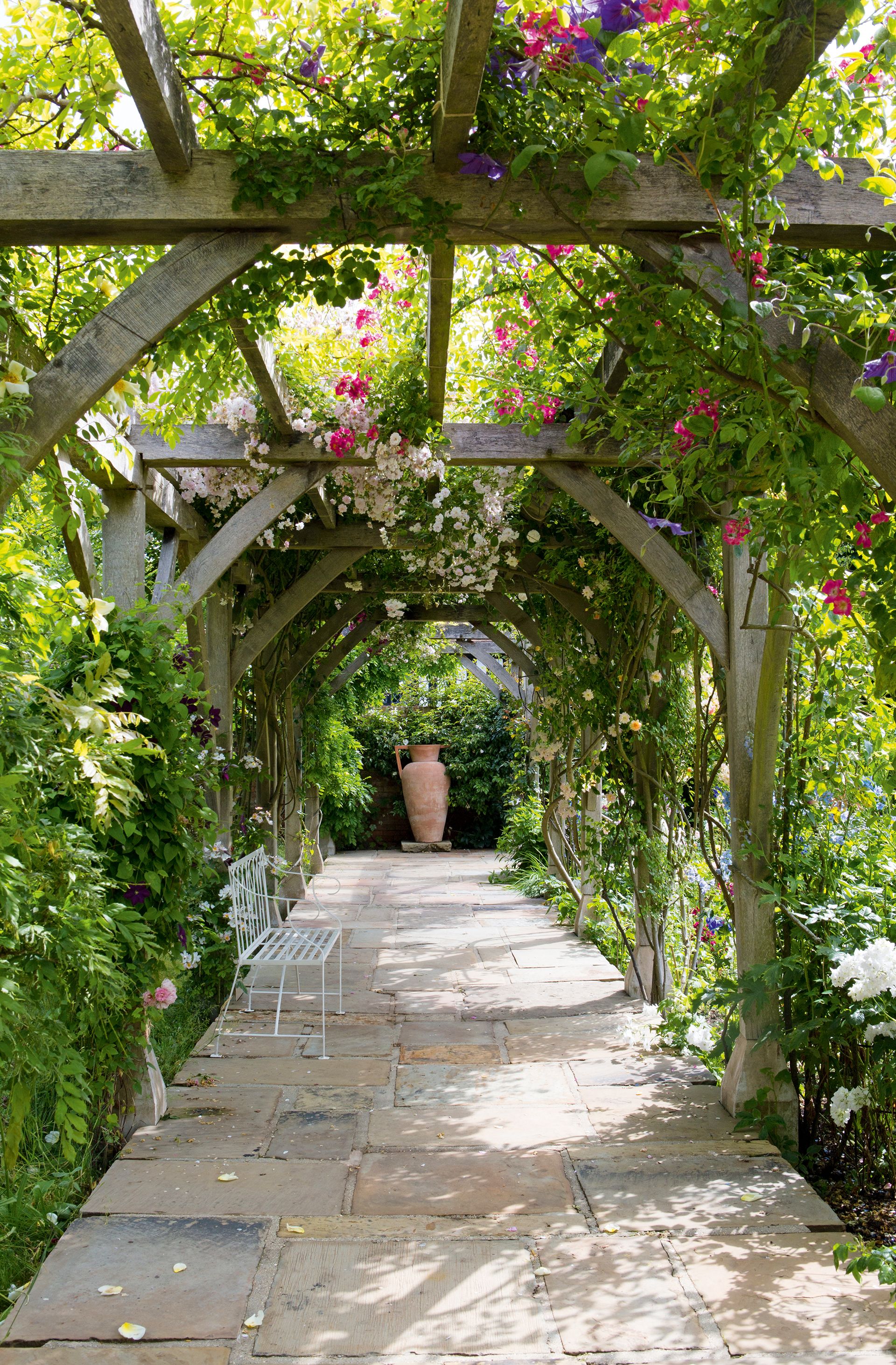
As well as growing upwards, explore the possibilities of growing plants overhead in a cottage garden, for a truly immersive experience.
is ideal for this purpose and can also create a private shaded, sheltered area to escape the midday sun.
If you know , then it’s the obvious choice, with its twisted branches and glorious drapes of purple flowers; but roses, clematis, honeysuckle and jasmine are all good cottage garden plants to provide overhead interest.
10. Go For A Pink And Mauve Color Palette
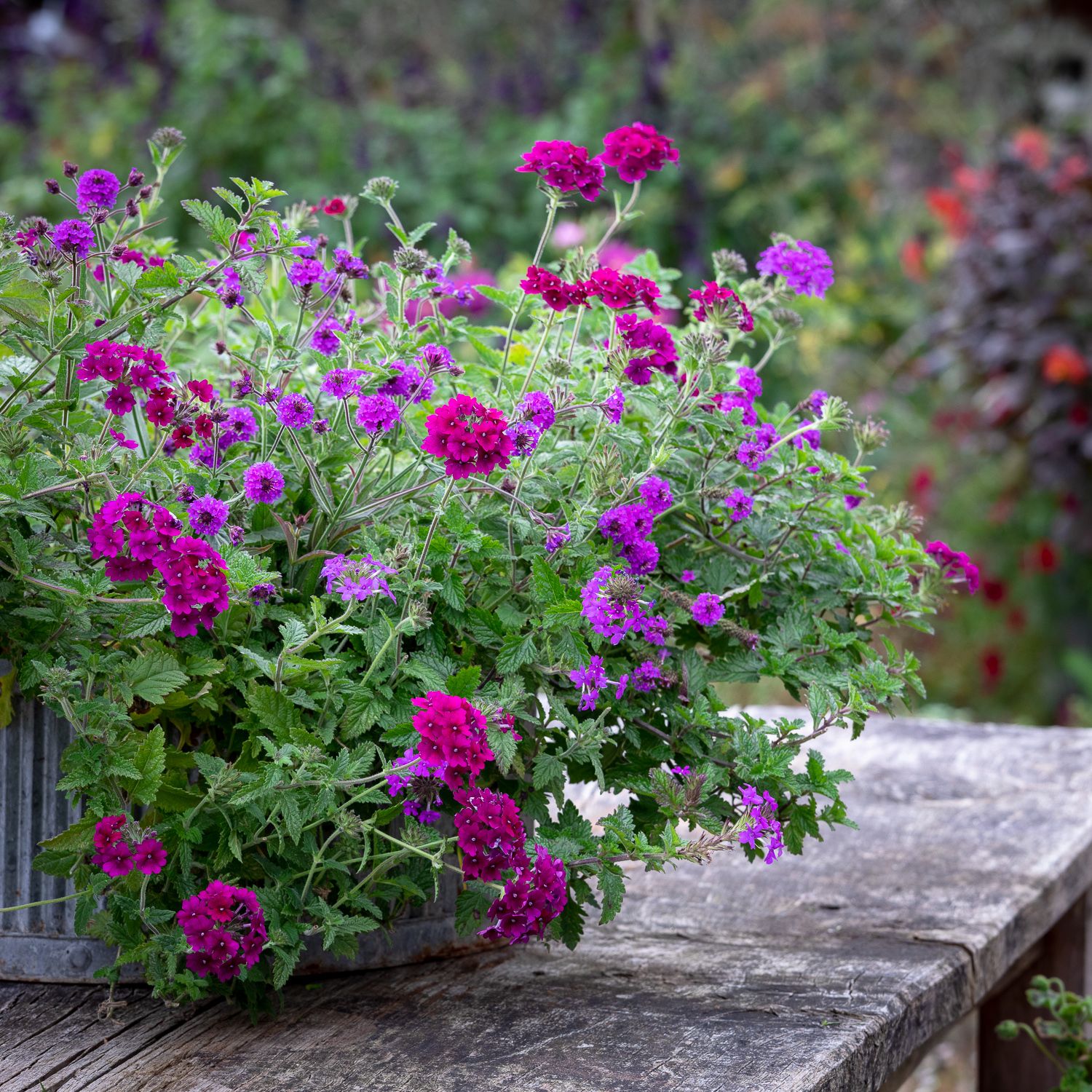
Verbena bonariensis in a mass of jewel-toned colours
Choose the right color scheme for your cottage garden look and you’re halfway there. A muted palette of soft pinks and mauves (perhaps with a dash of purple to add some drama) always works, especially if you keep things simple and stick to it.
Add in some touches of vintage cream and set the whole thing against a neutral backdrop of green and the result will be positively painterly. As you get more confident mix in some pale greys, washed out blues and silvery foliage to add depth and complexity that will segue beautifully with your look.
Where to start? With drifts of heavenly mauve lavender and ruffled old-fashioned pink roses (of course), as well as jewel-toned purple and magenta Verbena bonariensis like these beauties.
11. Plant A Wildflower Meadow In Your Cottage Garden

‘Meadows can be a glorious addition to the garden, whether purely wildflowers or enhanced with other species. They make a harmonious medley, attractive to us and also to a host of wildlife,’ says Clapp.
A meadow area doesn’t have to be big – you can sow seed in neglected corners or even large containers, as long as the area gets good sunlight. Classic seed mixes can include ox-eye daisies, marigolds, teasel, chamomile, foxgloves and poppies, but you can also include ever-popular cosmos and ammi majus.
‘Once established, meadows are quite low maintenance, needing cutting down after flowering and cuttings removed so they don’t increase fertility,’ says Clapp. ‘Annual meadows will need some repeated sowings; others will improve over time with many plants self-seeding to reinforce the natural effect. As your perennial meadow matures, add in some new plants for a longer season of interest, such as spring and summer bulbs.’
If you are hoping to introduce a wildlflower meadow to your cottage garden ideas, it is essential that you knowto ensure you achieve a thriving tapestry of blooms.
12. Use Paths And Steps To Zone Areas
